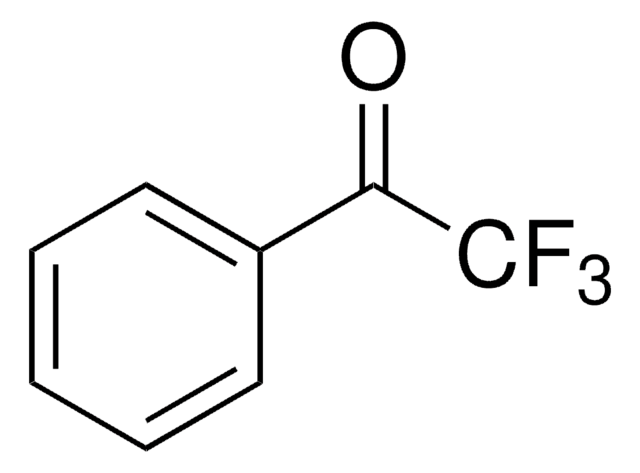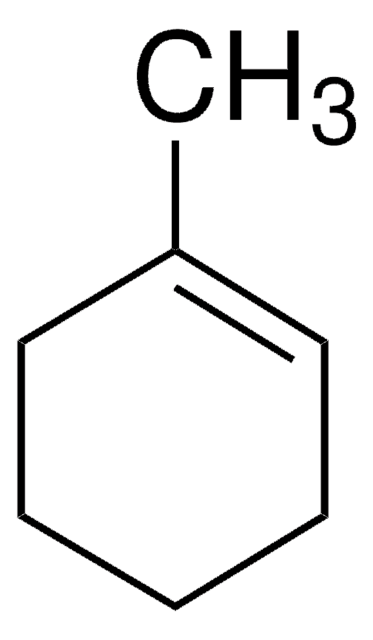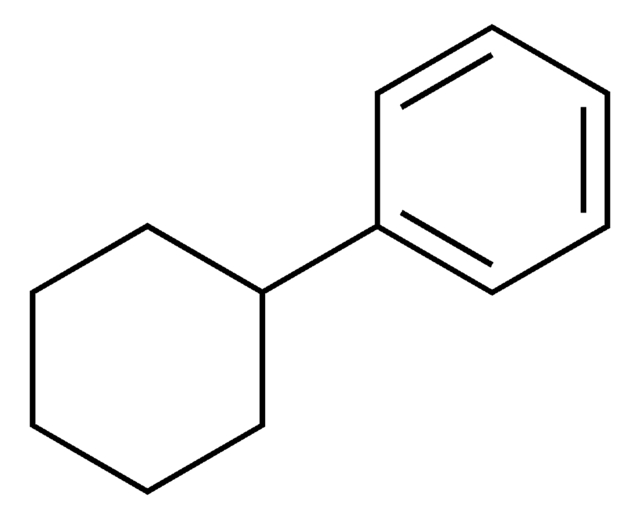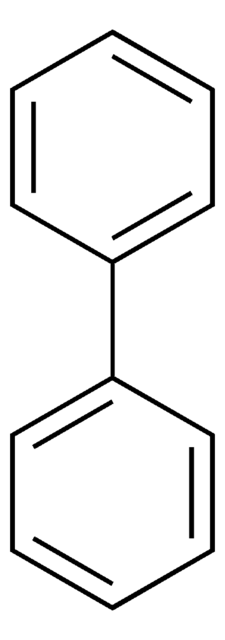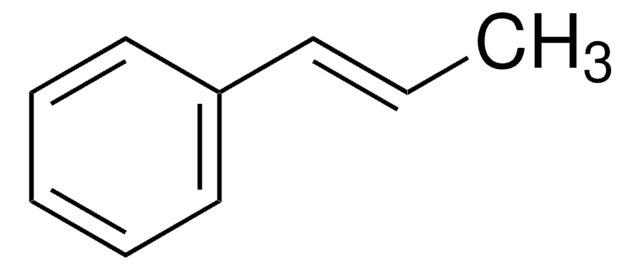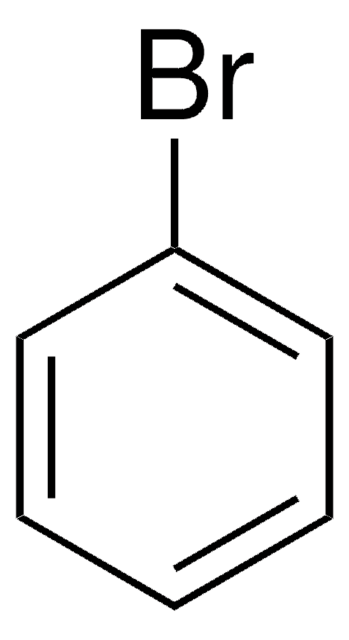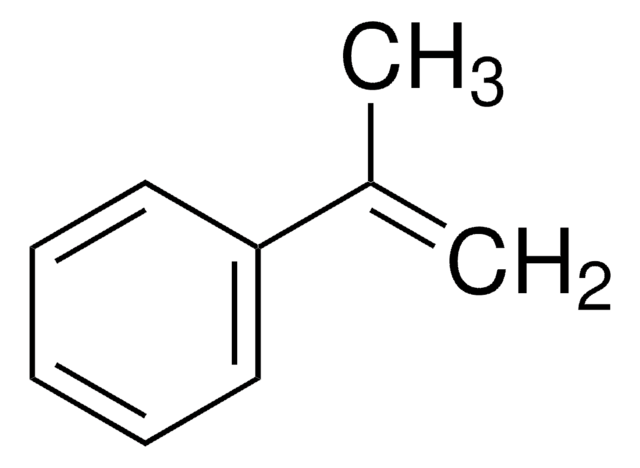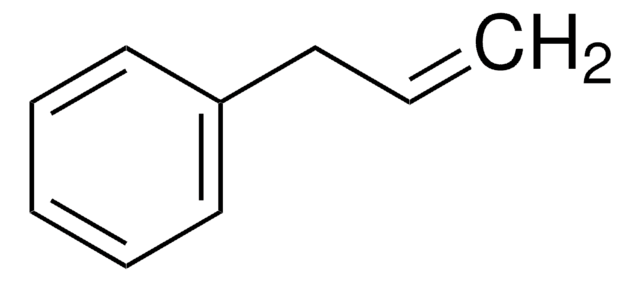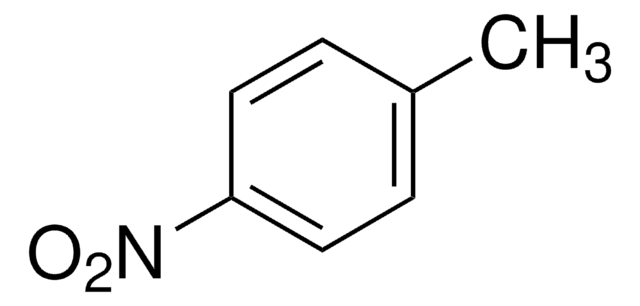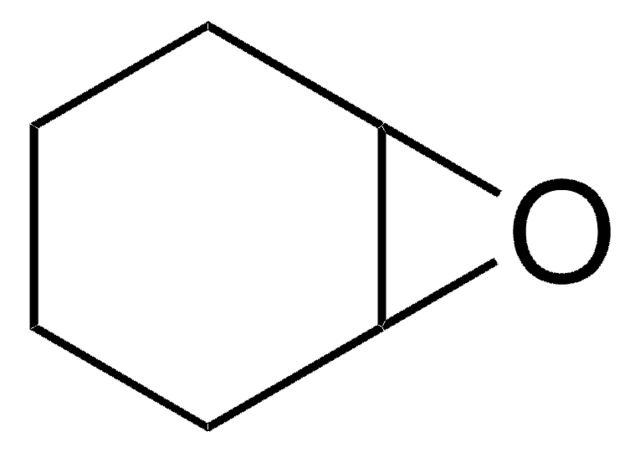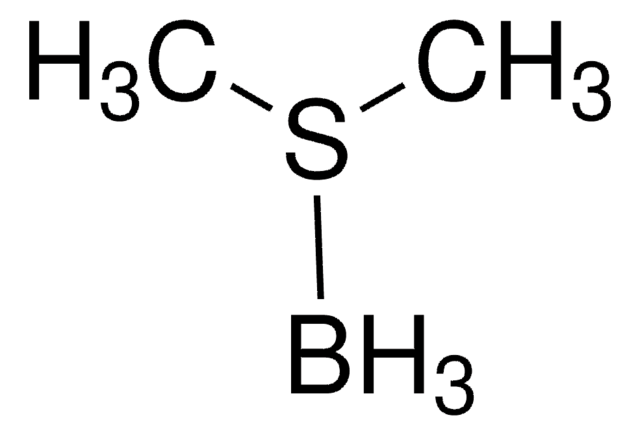P22303
1-Phenyl-1-cyclohexene
95%
Se connecterpour consulter vos tarifs contractuels et ceux de votre entreprise/organisme
About This Item
Formule linéaire :
C6H5C6H9
Numéro CAS:
Poids moléculaire :
158.24
Numéro CE :
Numéro MDL:
Code UNSPSC :
12352100
ID de substance PubChem :
Nomenclature NACRES :
NA.22
Produits recommandés
Niveau de qualité
Essai
95%
Indice de réfraction
n20/D 1.57 (lit.)
pb
251-253 °C (lit.)
Pf
−11 °C (lit.)
Densité
0.994 g/mL at 25 °C (lit.)
Chaîne SMILES
C1CCC(=CC1)c2ccccc2
InChI
1S/C12H14/c1-3-7-11(8-4-1)12-9-5-2-6-10-12/h1,3-4,7-9H,2,5-6,10H2
Clé InChI
WCMSFBRREKZZFL-UHFFFAOYSA-N
Catégories apparentées
Code de la classe de stockage
10 - Combustible liquids
Classe de danger pour l'eau (WGK)
WGK 3
Point d'éclair (°F)
217.4 °F - closed cup
Point d'éclair (°C)
103.00 °C - closed cup
Équipement de protection individuelle
Eyeshields, Gloves
Faites votre choix parmi les versions les plus récentes :
Déjà en possession de ce produit ?
Retrouvez la documentation relative aux produits que vous avez récemment achetés dans la Bibliothèque de documents.
Les clients ont également consulté
A K Chaturvedi et al.
Pharmacology, biochemistry, and behavior, 30(4), 1035-1043 (1988-08-01)
The interaction between phencyclidine (PCP) and its pyrolysis product, 1-phenylcyclohexene (PC), at metabolic level was evaluated in Swiss male mice (21-24 g). PC (1.1, 2.2 and 4.4 mmol/kg/day for 4 days, IP, in corn oil) treatment to mice induced the
C Y Hu et al.
Toxicology and applied pharmacology, 76(3), 403-413 (1984-12-01)
The toxicity of 1-phenylcyclohexene (PC), a pyrolysis product of phencyclidine (PCP), and its interaction with PCP were evaluated. The ip LD50 of PC in Swiss male mice was 22 mmol/kg. Treatment of mice with PC at 2.2 mmol/kg/day, ip, for
C E Cook et al.
Drug metabolism and disposition: the biological fate of chemicals, 12(2), 186-192 (1984-03-01)
In vitro metabolites of 1-phenylcyclohexene produced by the 10,000g supernatant fraction from rat liver homogenates were identified by a combination of spectrometric, chromatographic, and synthetic techniques. Initial oxidation occurred in the 3-position of 1-phenylcyclohexene to yield 1-phenyl-1-cyclohexen-3-one and 1-phenyl-1-cyclohexen-3-ol. Further
F C Law et al.
Drug and chemical toxicology, 7(3), 273-282 (1984-01-01)
The biliary excretion of 14C-phenylcyclohexene and its metabolites were studied in rats pretreated with an inducer or inhibitor of mixed-function oxidases or with an agent known to deplete liver glutathione. Pretreatment of rats with 3-methylcholanthrene or phenobarbital enhanced the biliary
A S Freeman et al.
Drug metabolism and disposition: the biological fate of chemicals, 10(6), 680-684 (1982-11-01)
Mice were exposed to the smoke from placebo marihuana cigarettes treated with phencyclidine hydrochloride (PCP . HCl). A dose-related decrement in motor performance was observed after exposure to the smoke from cigarettes containing 10-15 mg of PCP . HCl. Tissue
Notre équipe de scientifiques dispose d'une expérience dans tous les secteurs de la recherche, notamment en sciences de la vie, science des matériaux, synthèse chimique, chromatographie, analyse et dans de nombreux autres domaines..
Contacter notre Service technique